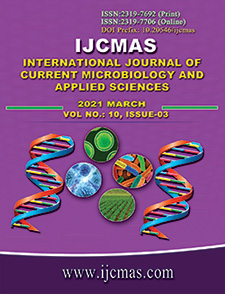


 National Academy of Agricultural Sciences (NAAS)
National Academy of Agricultural Sciences (NAAS)

|
PRINT ISSN : 2319-7692
Online ISSN : 2319-7706 Issues : 12 per year Publisher : Excellent Publishers Email : editorijcmas@gmail.com / submit@ijcmas.com Editor-in-chief: Dr.M.Prakash Index Copernicus ICV 2018: 95.39 NAAS RATING 2020: 5.38 |
Chilli (genus Capsicum, family Solanaceae) is an important food commodity used as vegetable, spice, medicinal herb and ornamental plant across the world. One of the main constrains hindering its cultivation is leaf curl disease caused by Chilli leaf curl virus (ChiLCV). This is the most devastating virus diseases of chilli in the world. Due to its continuing and rapid spread, leaf curl disease epidemics are observed across the agro climatic regions of India. Information of its distribution, severity, host cultivars and vector abundance helps in determining its management. In the present study, spatial distribution of chilli leaf virus disease in chilli growing North Karnataka is undertaken during 2019-20. Roving survey conducted revealed the incidence of ChiLCV across the region ranging from 2.5 % to 100%. Among the seven districts surveyed, highest average disease incidence of 42.53 per cent was noticed in Gadag district followed by Vijayapura (33.17%), Raichur (32.32%), Bagalkot (30.22%), Yadgir (30.16%), Koppal (29.79%) and lowest in Ballari district (16.74). Varying range of symptoms viz. upward curling, stunted growth, vein thickening and bushy appearance were predominantly recorded during the survey. Vector population was recorded in all the plots visited and was high in severely infested plots. Weeds around the infested chilli plots had virus symptoms, which may shelter the virus and vector during off season. Irrespective of soil types incidence of ChiLCV was found in all the cultivars grown. This information helps in identifying the virus and vector free areas for successful chilli cultivation and also develops suitable and effective chilli leaf curl disease management strategies.
 |
 |
 |
 |
 |